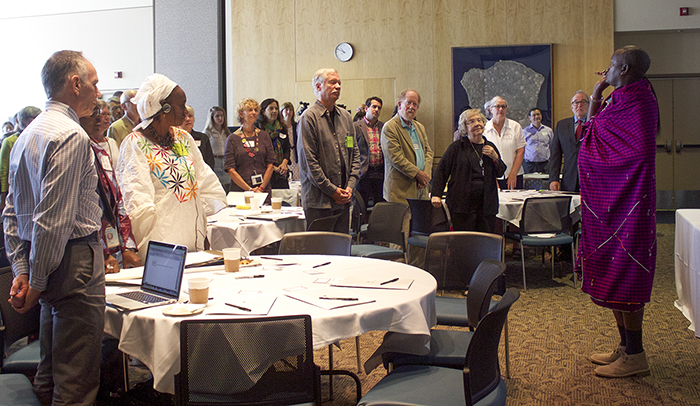Against the backdrop of the Smithsonian Folklife Festival last June, the Center hosted Intangible Cultural Heritage: An International Dialogue, a gathering which brought together scholars and professionals working on issues of cultural heritage policy to discuss international approaches, challenges, and opportunities for collaboration. Participants working in intangible cultural heritage, or ICH, came from China, Kenya, Senegal, all over the United States, and from across the Smithsonian.
The impetus for the event grew out of the Center’s ranging interests in ICH and cultural policy work, including our Festival collaboration with China, past partnerships with Kenyan and Senegalese cultural heritage organizations, and ongoing partnerships with domestic cultural heritage organizations interested in learning how to do what we do.
The 2014 Festival program China: Tradition and the Art of Living led to collaboration with the Ministry of Culture of the People’s Republic of China, which has built up great momentum around ICH preservation and development. The program afforded an unprecedented opportunity to convene a group of scholars, artists, and specialists from the United States and China to discuss current practices, policies, and strategies used in both countries to preserve ICH.
Kenya: Mambo Poa, the other featured Festival program, inspired us to invite governmental and state museum representatives from the East African country. We were especially excited to bring a group of Maasai representatives, based in the Olorgesailie region in the Southern Rift Valley, who were part of the 2013 project Smithsonian in Kenya: Olorgesailie Resource Center: Building a Vision and Strategic Plan.


In addition to these delegations from China and Kenya, we hosted a representative from Senegal’s Ministry of Culture. Of the roughly one hundred participants, one-third were international scholars, cultural heritage professionals, and government representatives; one-third represented U.S. universities and nonprofit arts and cultural organizations; and one-third came from across the Smithsonian.
Panels were organized around several topics, including challenges present in ICH work; the work of artists and arts organizations engaging and collaborating with communities sustaining ICH; research and documentation; collections, access, and inventory making; and cultural industries, tourism, and ICH. Thanks to note-takers Chloe Ahmann and Liz Walsh, the proceedings are available for the public.
Collaborating Smithsonian partners included the Freer and Sackler Galleries, the Office of International Relations, the National Museum of African Art, and the National Museum of Natural History. Read about the repatriation of a Maasai shield that came about because of the meeting. Thank you to the China International Culture Association, the Smithsonian Consortium for World Cultures, and the Human Origins Program at the National Museum of Natural History for supporting the meeting.
The conference can be viewed in its entirety in this three-part video.
Sally Van de Water is a program coordinator at the Center for Folklife and Cultural Heritage and organized Intangible Cultural Heritage: An International Dialogue. She finds the real-world application of cultural heritage policy fascinating, sometimes maddening, and often rewarding.


